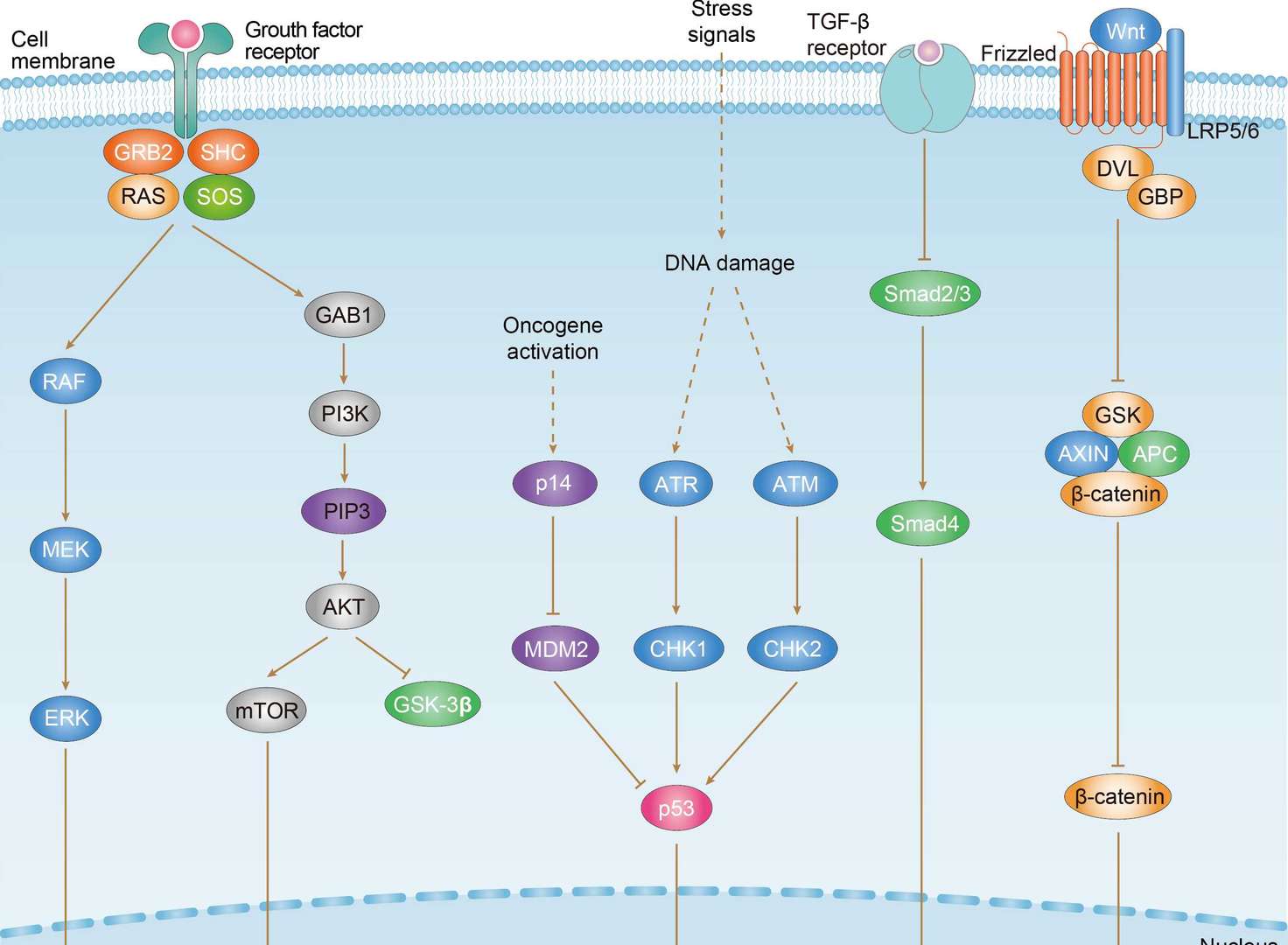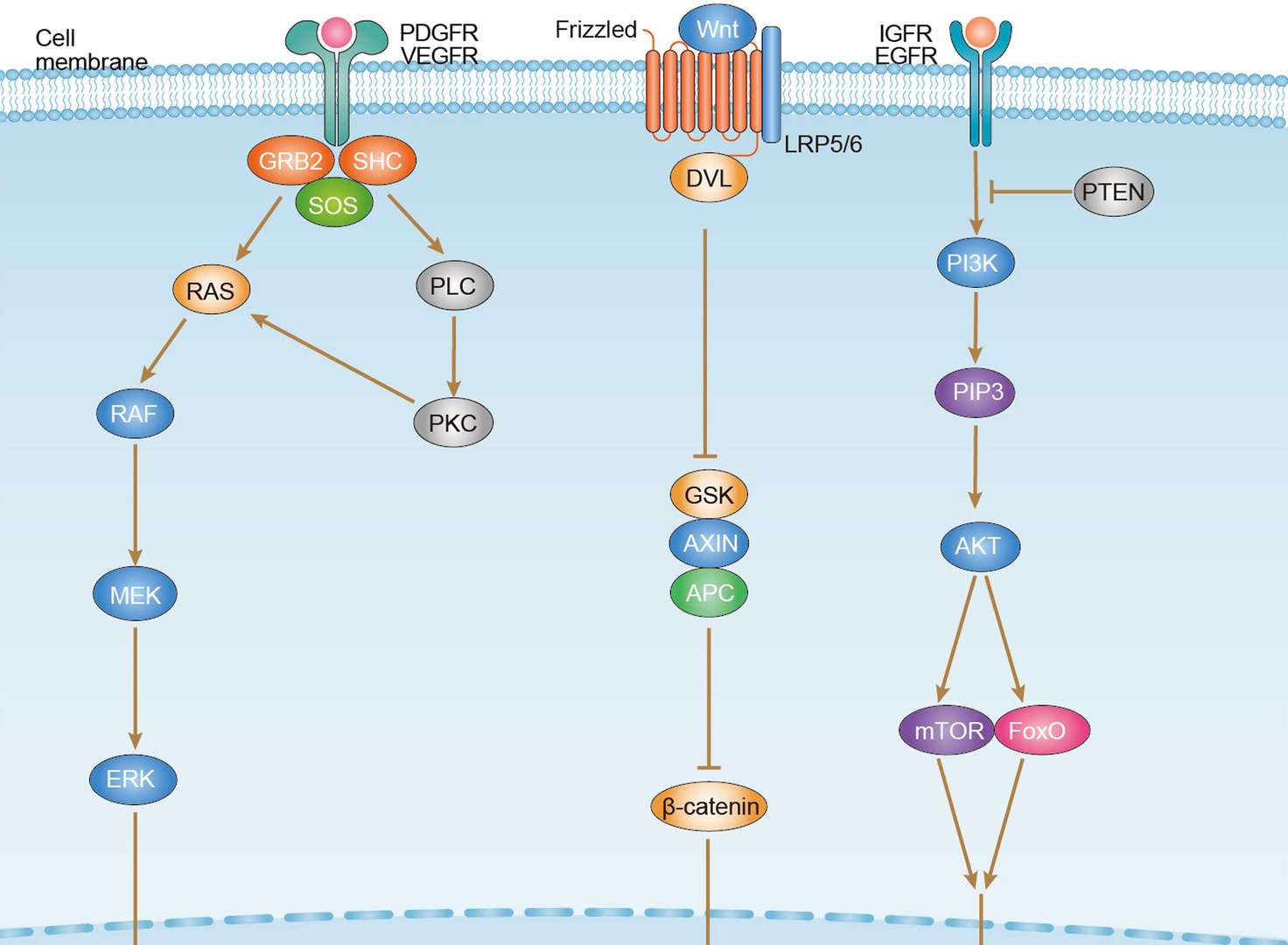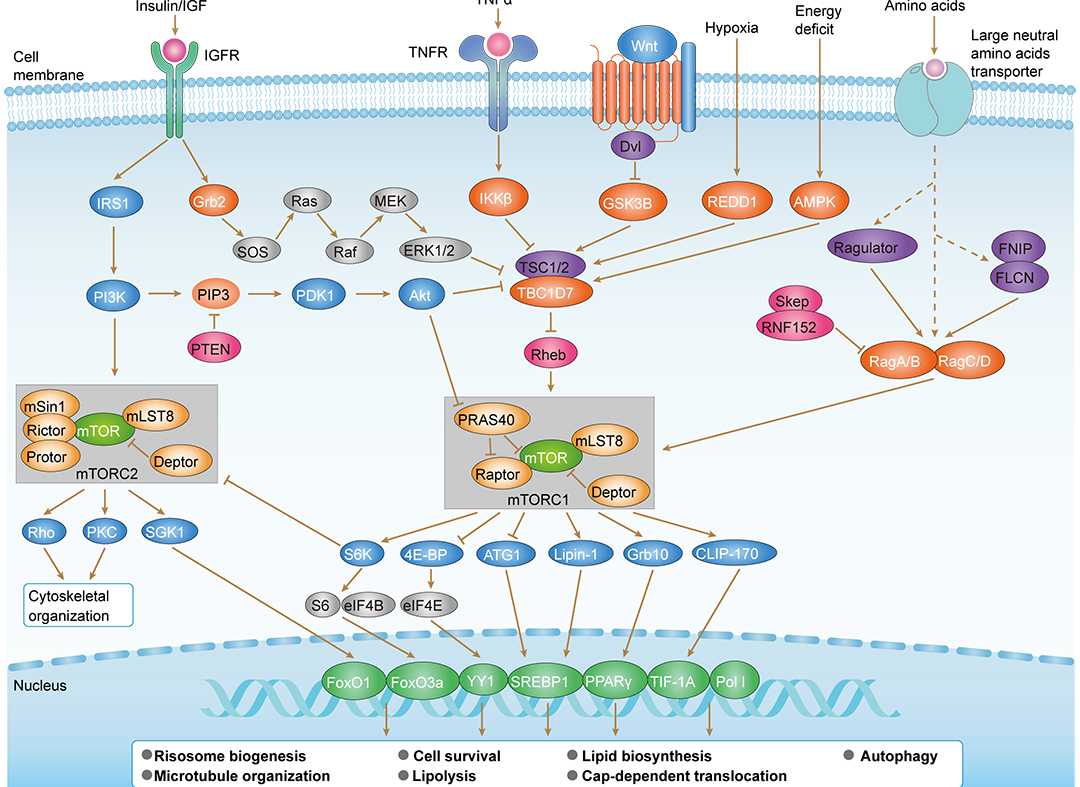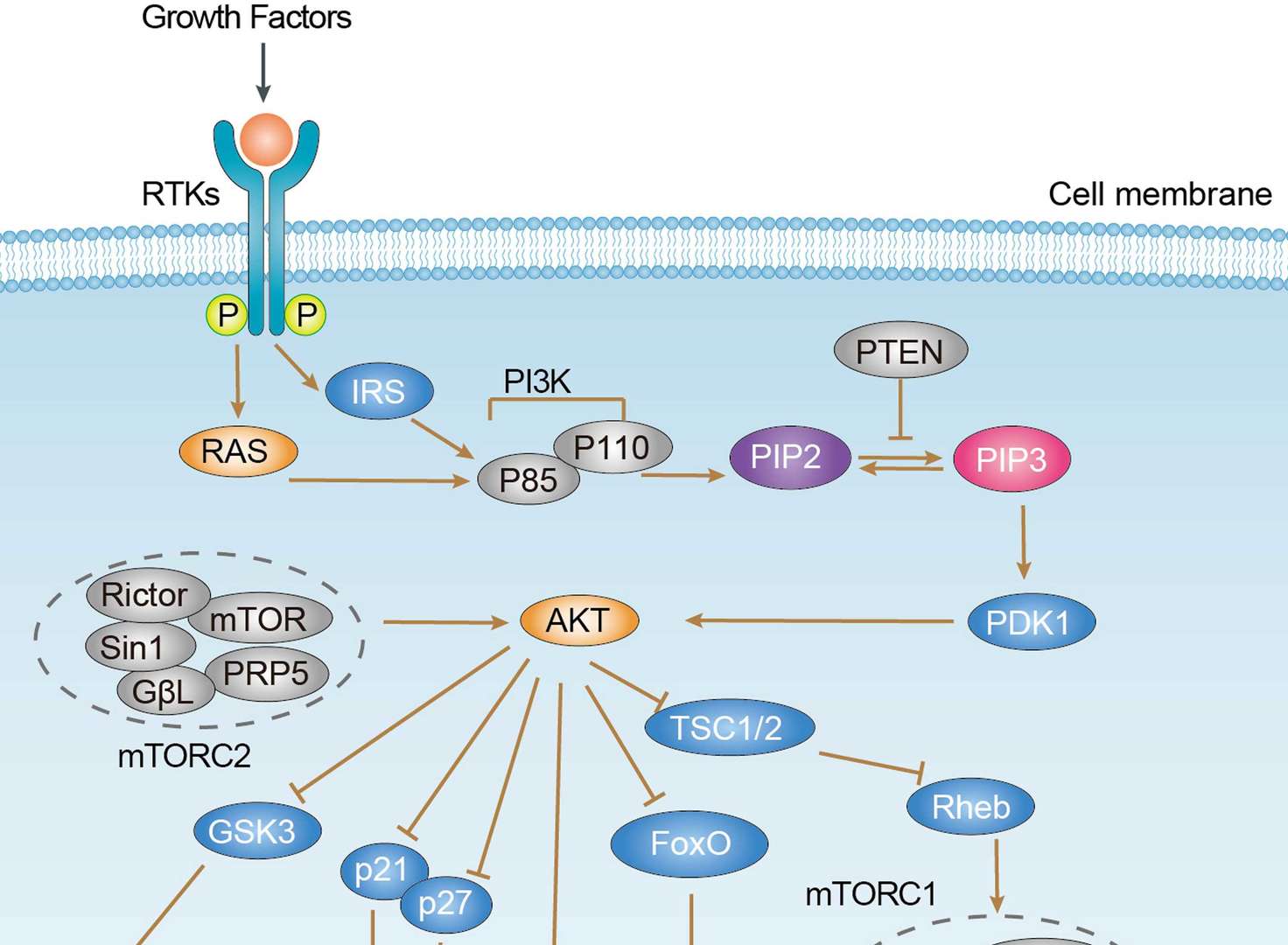Rabbit Anti-FOXO3 Recombinant Antibody (VS3-CJ151) (CAT#: VS3-CJ151)
This product is a rabbit antibody that recognizes Phospho-FOXO3 (S253).

(Immunofluorescent staining of human cell line SH-SY5Y shows localization to nucleoplasm.)
* Image credit: Human Protein Atlas v21.proteinatlas.org/images/63104/if_selected.jpg

(Immunofluorescent staining of human cell line A-431 shows localization to nucleoplasm.)
* Image credit: Human Protein Atlas v21.proteinatlas.org/images/4074/if_selected.jpg

(Immunohistochemical staining of human adrenal gland shows strong nuclear positivity in cortical cells.)
* Image credit: Human Protein Atlas v21.proteinatlas.org/images/4074/ihc_selected.jpg

(Endothelial cells Staining: Medium Intensity: Moderate Quantity: 75%-25% Location: nuclear Neuronal cells Staining: Medium Intensity: Moderate Quantity: 75%-25% Location: Nuclear)
* Image credit: Human Protein Atlas v21.proteinatlas.org/images/4074/21601_B_7_5.jpg

(Endothelial cells Staining: Medium Intensity: Moderate Quantity: 75%-25% Location: Nuclear Glandular cells Staining: Medium Intensity: Moderate Quantity:>75% Location: Nuclear)
* Image credit: Human Protein Atlas v21.proteinatlas.org/images/4074/21601_A_7_3.jpg

(Cholangiocytes Staining: Medium Intensity: Moderate Quantity: 75%-25% Location: Nuclear)
* Image credit: Human Protein Atlas v21.proteinatlas.org/images/4074/21601_A_8_4.jpg

(Cells in glomeruli Staining: Medium Intensity: Moderate Quantity: 75%-25% Location: Nuclear Cells in tubules Staining: Medium Intensity: Moderate Quantity: 75%-25% Location: Nuclear)
* Image credit: Human Protein Atlas v21.proteinatlas.org/images/4074/21601_A_7_5.jpg

(Cell lines ordered by descending RNA expression order)
* Image credit: Human Protein Atlas v21.proteinatlas.org/ENSG00000118689-FOXO3
Specifications
- Immunogen
- KLH-conjugated synthetic peptide
- Host Species
- Rabbit
- Type
- Rabbit IgG
- Specificity
- Human, Mouse and Rat FOXO3
- Species Reactivity
- Human, Mouse, Rat
- Applications
- WB, IHC
- Conjugate
- Unconjugated
Product Property
- Purification
- Protein A affinity purified
- Purity
- >95% as determined by SDS-PAGE
- Buffer
- 40% Glycerol, 1% BSA, TBS, pH7.4.
- Preservative
- 0.05% sodium azide
- Storage
- Store at 4°C for short term. Aliquot and store at -20°C for long term. Avoid repeated freeze/thaw cycles.
- Shipping
- Ice packs
Applications
- Application Notes
- This antibody has been tested for use in Western Blot, Immunohistochemistry.
Target
- Alternative Names
- FOXO2; AF6q21; FKHRL1; FOXO3A; FKHRL1P2
- Gene ID
- 2309
- UniProt ID
- O43524
- Cellular Localization
- Cytoplasm, Membrane, Mitochondrion, Mitochondrion outer membrane, Nucleus
- Post Translation Modifications
- In the presence of survival factors such as IGF-1, phosphorylated on Thr-32 and Ser-253 by AKT1/PKB (PubMed:10102273).
This phosphorylated form then interacts with 14-3-3 proteins and is retained in the cytoplasm (PubMed:10102273).
Survival factor withdrawal induces dephosphorylation and promotes translocation to the nucleus where the dephosphorylated protein induces transcription of target genes and triggers apoptosis (PubMed:10102273).
Although AKT1/PKB doesn't appear to phosphorylate Ser-315 directly, it may activate other kinases that trigger phosphorylation at this residue (PubMed:10102273, PubMed:11154281).
Phosphorylated by STK4/MST1 on Ser-209 upon oxidative stress, which leads to dissociation from YWHAB/14-3-3-beta and nuclear translocation (PubMed:16751106).
Phosphorylated by PIM1 (PubMed:18593906).
Phosphorylation by AMPK leads to the activation of transcriptional activity without affecting subcellular localization (PubMed:17711846).
In response to metabolic stress, phosphorylated by AMPK on Ser-30 which mediates FOXO3 mitochondrial translocation (PubMed:29445193).
Phosphorylation by MAPKAPK5 promotes nuclear localization and DNA-binding, leading to induction of miR-34b and miR-34c expression, 2 post-transcriptional regulators of MYC that bind to the 3'UTR of MYC transcript and prevent its translation (PubMed:21329882).
Phosphorylated by CHUK/IKKA and IKBKB/IKKB (PubMed:15084260).
TNF-induced inactivation of FOXO3 requires its phosphorylation at Ser-644 by IKBKB/IKKB which promotes FOXO3 retention in the cytoplasm, polyubiquitination and ubiquitin-mediated proteasomal degradation (PubMed:15084260).
May be dephosphorylated by calcineurin A on Ser-299 which abolishes FOXO3 transcriptional activity (By similarity).
In cancer cells, ERK mediated-phosphorylation of Ser-12 is required for mitochondrial translocation of FOXO3 in response to metabolic stress or chemotherapeutic agents (PubMed:29445193).
Phosphorylation at Ser-253 promotes its degradation by the proteasome (PubMed:30513302).
Dephosphorylation at Ser-253 by protein phosphatase 2A (PPP2CA) promotes its stabilization; interaction with PPP2CA is enhanced by AMBRA1 (PubMed:30513302).
- Protein Refseq
- NP_001446.1; NP_963853.1
- Function
- Transcriptional activator that recognizes and binds to the DNA sequence 5'-[AG]TAAA[TC]A-3' and regulates different processes, such as apoptosis and autophagy (PubMed:10102273, PubMed:16751106, PubMed:21329882, PubMed:30513302).
Acts as a positive regulator of autophagy in skeletal muscle: in starved cells, enters the nucleus following dephosphorylation and binds the promoters of autophagy genes, such as GABARAP1L, MAP1LC3B and ATG12, thereby activating their expression, resulting in proteolysis of skeletal muscle proteins (By similarity).
Triggers apoptosis in the absence of survival factors, including neuronal cell death upon oxidative stress (PubMed:10102273, PubMed:16751106).
Participates in post-transcriptional regulation of MYC: following phosphorylation by MAPKAPK5, promotes induction of miR-34b and miR-34c expression, 2 post-transcriptional regulators of MYC that bind to the 3'UTR of MYC transcript and prevent its translation (PubMed:21329882).
In response to metabolic stress, translocates into the mitochondria where it promotes mtDNA transcription (PubMed:23283301).
In response to metabolic stress, translocates into the mitochondria where it promotes mtDNA transcription. Also acts as a key regulator of chondrogenic commitment of skeletal progenitor cells in response to lipid availability: when lipids levels are low, translocates to the nucleus and promotes expression of SOX9, which induces chondrogenic commitment and suppresses fatty acid oxidation (By similarity).
Also acts as a key regulator of regulatory T-cells (Treg) differentiation by activating expression of FOXP3 (PubMed:30513302).
Recommended Products
Isotype Control
Secondary Antibody
Related Resources
Product Notes
This is a product of Creative Biolabs' Hi-Affi™ recombinant antibody portfolio, which has several benefits including:
• Increased sensitivity
• Confirmed specificity
• High repeatability
• Excellent batch-to-batch consistency
• Sustainable supply
• Animal-free production
See more details about Hi-Affi™ recombinant antibody benefits.
Downloads
Download resources about recombinant antibody development and antibody engineering to boost your research.
See other products for "FOXO3"
Recombinant Antibody
| CAT | Product Name | Application | Type |
|---|---|---|---|
| MOB-1068MZ | Recombinant Mouse Anti-Human FOXO3 Antibody | IHC-P | Mouse antibody |
| MRO-0602-CN | Rabbit Anti-FOXO3 Recombinant Antibody (clone SP0054) | WB, IF | Rabbit IgG |
| ZG-0675J | Rabbit Anti-FOXO3 Recombinant Antibody (clone 1E1) | ELISA, WB, IHC | Rabbit IgG |
| VS3-FY560 | Recombinant Rabbit Anti-FOXO3 Antibody (clone R03-2H2) | WB | Rabbit IgG |
| VS3-FY561 | Recombinant Rabbit Anti-FOXO3 (phospho Ser253) Antibody (clone R06-2G6) | WB | Rabbit IgG |
Rabbit Monoclonal Antibody
| CAT | Product Name | Application | Type |
|---|---|---|---|
| MOR-1344 | Hi-Affi™ Rabbit Anti-FOXO3 Recombinant Antibody (clone DS1344AB) | ICC, IF, IHC-P, WB | Rabbit IgG |
Customer Reviews and Q&As
There are currently no Customer reviews or questions for VS3-CJ151. Click the button above to contact us or submit your feedback about this product.
View the frequently asked questions answered by Creative Biolabs Support.
For Research Use Only. Not For Clinical Use.
For research use only. Not intended for any clinical use. No products from Creative Biolabs may be resold, modified for resale or used to manufacture commercial products without prior written approval from Creative Biolabs.
This site is protected by reCAPTCHA and the Google Privacy Policy and Terms of Service apply.

 Gastric Cancer
Gastric Cancer
 Hepatocellular Carcinoma
Hepatocellular Carcinoma
 Insulin Signaling Pathway
Insulin Signaling Pathway
 mTOR Signaling Pathway
mTOR Signaling Pathway
 PI3K-Akt Signaling Pathway
PI3K-Akt Signaling Pathway
